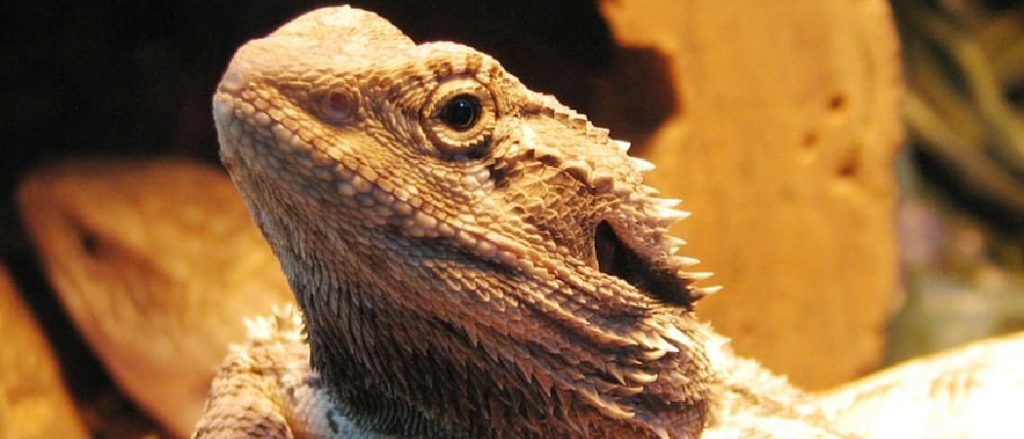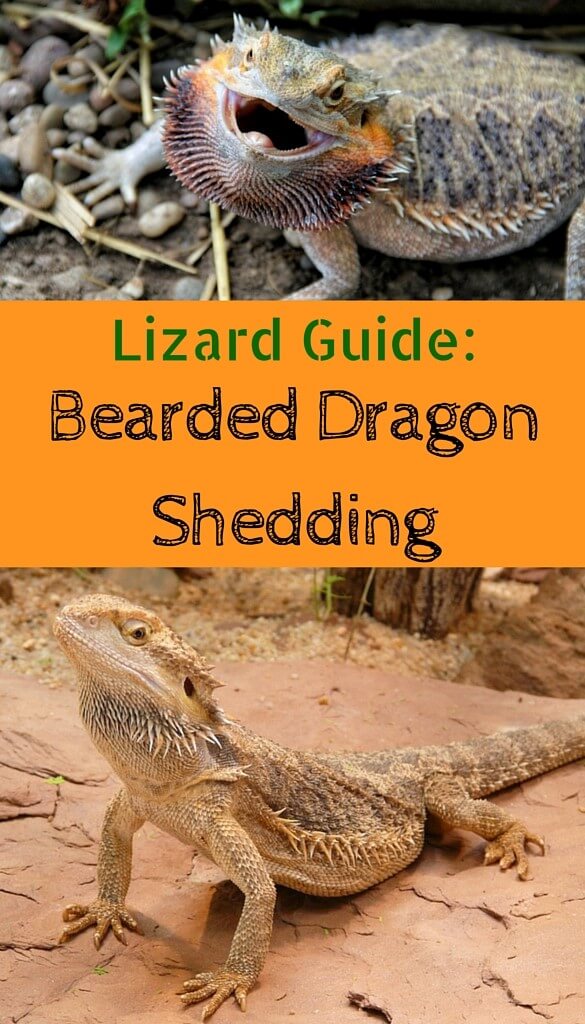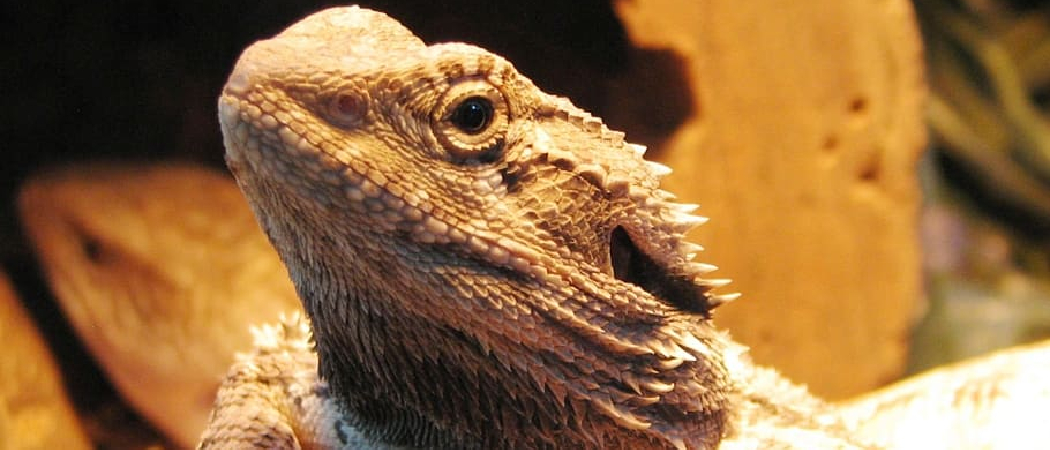Bearded dragons shed their skin every 4-6 weeks, with the shedding process lasting around 1-2 weeks. During shedding, they may appear dull, have loose skin, and experience reduced appetite.

Shedding is a natural process for bearded dragons, allowing them to grow and replace old skin. We will explore the shedding process in bearded dragons, its frequency, and how to ensure a smooth shedding experience for these amazing reptiles. We will also provide some helpful tips and guidance to help you care for your bearded dragon during their shedding period.
So, let’s dive in and learn more about how often bearded dragons shed and what you can do to support them through this process.

Credit: www.pbspettravel.co.uk
Understanding Bearded Dragon Shedding
Shedding is a natural and fascinating process that all bearded dragons go through. It is important for reptile owners to understand the ins and outs of shedding to ensure the well-being of their scaly friends. In this article, we will delve into the world of bearded dragon shedding, answering questions such as what it is, why it happens, and how often it occurs.
What Is Bearded Dragon Shedding?
Bearded dragon shedding refers to the process of shedding the outer layer of skin, scales, and nails. This shedding is a vital part of their growth and development. As bearded dragons grow, their skin becomes too tight, and shedding allows them to get rid of the old skin and reveal a fresh, healthy layer underneath. Typically, shedding begins at the head, then progresses towards the tail.
Why Do Bearded Dragons Shed?
There are several reasons why bearded dragons shed their skin. Firstly, shedding helps them remove any dead skin cells, bacteria, or parasites that may be present. It also allows for the growth of new skin to support their increasing body size. Shedding also plays a crucial role in temperature regulation. The process of shedding helps bearded dragons cool down during hot weather, as the old skin acts as an insulator.
How Often Do Bearded Dragons Shed?
The frequency of bearded dragon shedding is influenced by various factors such as age, health, and environment. Generally, younger bearded dragons shed more frequently than older ones. Juveniles may shed every few weeks, while adult bearded dragons shed every few months. Additionally, shedding can be triggered by changes in temperature, lighting, or humidity levels. It is crucial to provide a suitable habitat that mimics their natural environment to ensure regular shedding.
It’s important to mention that abnormal shedding patterns, such as prolonged difficulty shedding or frequent stuck shed, may indicate an underlying health issue. If you notice any abnormalities or concerns during shedding, consult a reptile veterinarian for proper guidance and care.
In conclusion, bearded dragon shedding is a normal and necessary process for their growth and well-being. Understanding why and how often https://petsical.com/what-does-stuck-shed-look-like-on-a-bearded-dragon/ bearded dragons shed is essential for reptile owners to provide the best care possible, ensuring their scaly buddies are healthy, happy, and ready to embrace a shiny new layer of skin!

Credit: www.youtube.com
Signs And Stages Of Shedding
Bearded dragons are fascinating reptiles known for their distinctive scaly appearance. However, like other reptiles, they regularly shed their skin to accommodate their growth. Understanding the signs and stages of shedding can help you ensure your bearded dragon’s health and well-being. In this article, we will explore the physical signs of shedding, as well as the pre-shedding, shedding, and post-shedding stages.
Physical Signs Of Shedding
Before we delve into the different stages of shedding, let’s take a look at the physical signs that indicate your bearded dragon is about to shed its skin. These signs can vary slightly from dragon to dragon, but common indicators include:
- Cloudy eyes: One of the most noticeable signs of imminent shedding is the appearance of cloudy or bluish eyes. This is caused by a build-up of fluid between the old and new layers of skin.
- Changes in color: As the shedding process begins, you may notice that your bearded dragon’s skin color appears duller or grayer than usual. This is due to the underlying new skin starting to show through.
- Increased hiding: Bearded dragons often seek out sheltered areas or hide more frequently when they are about to shed. This behavior can be attributed to their natural instinct to protect themselves during this vulnerable period.
- Loss of appetite: It is not uncommon for bearded dragons to experience a decreased appetite just before shedding. This is typically a temporary change and should return to normal once the shedding process is complete.
Pre-shedding Stage
The pre-shedding stage is the period when your bearded dragon’s body prepares for the shedding process. During this stage, you may observe some notable changes in their behavior and physical appearance:
- Restlessness: Your bearded dragon may become more restless during the pre-shedding stage. They may pace around their enclosure or show signs of agitation.
- Decreased activity: As their bodies focus on shedding, you may notice a decrease in your dragon’s normal activity levels. They may become less active and spend more time basking or resting.
- Increased bathing: Bearded dragons often seek out bathing opportunities during this stage. Providing a shallow water dish can help them hydrate and facilitate the shedding process.
Shedding Stage
The shedding stage is when the actual shedding of the skin occurs. During this time, you should try to create a suitable environment to assist your bearded dragon throughout the shedding process. Here’s what you can expect during this stage:
- Peeling skin: As your bearded dragon sheds, you will notice patches of old skin starting to peel away. It’s essential to resist the urge to peel the skin off yourself, as this can cause harm.
- Increased itching: You may observe your dragon scratching against various surfaces to alleviate any discomfort caused by the shedding process. Providing soft materials or a designated shedding area can help minimize irritation.
- Varied shedding times: The shedding process duration can vary among bearded dragons. Some may shed their skin within a few days, while others may take weeks to complete the process. Each dragon is unique.
Post-shedding Stage
The post-shedding stage is when your bearded dragon’s new skin has fully emerged, and they have shed their old skin. During this time, you can expect to see your dragon return to their normal behavior and appearance:
- Enhanced colors: Once your dragon has shed its skin, you will likely notice a brighter and more vibrant coloration. The new skin is fresh and represents your bearded dragon’s healthy growth.
- Increased appetite: As your dragon’s shedding process concludes, you should see their appetite return to normal or even increase. This is a positive sign that they are in good health.
- Improved energy levels: After shedding, your bearded dragon may exhibit an increase in energy and activity levels. They may resume their usual basking, exploring, and interacting behaviors.
Understanding the signs and stages of shedding is vital to ensure the well-being of your bearded dragon. By being attentive to their physical signs and providing the right environment, you can support their natural shedding process and contribute to their overall health and happiness.
Caring For A Bearded Dragon During Shedding
Bearded dragons are fascinating reptiles that go through a natural process of shedding their skin as they grow. Shedding is a completely normal and essential part of their development, as it allows them to replace old skin with new, healthier skin. As a responsible bearded dragon owner, it is important to understand the shedding process and provide proper care during this time. In this article, we will discuss some essential tips for caring for a bearded dragon during shedding.
Providing Proper Humidity And Temperature
During shedding, maintaining the correct humidity and temperature levels in the bearded dragon’s habitat is crucial. Proper humidity helps soften the old skin and facilitates a smoother shedding process. To ensure the ideal humidity, you can use a hygrometer to measure the levels regularly. The humidity level should be around 30-40%. However, it’s important to avoid excessive moisture as it can lead to respiratory problems for your bearded dragon.
In addition to humidity, maintaining the right temperature is equally important. Bearded dragons need a temperature gradient in their enclosure, with a basking spot that reaches around 95-105°F (35-40°C). This temperature helps stimulate shedding and allows the bearded dragon to comfortably shed its old skin. Ensure that there are cooler areas within the enclosure as well, where the temperature ranges from 75-85°F (24-29°C).
Hydration And Moisturizing
Proper hydration plays a vital role in facilitating the shedding process for bearded dragons. Ensure a fresh supply of clean water is always available in their habitat. Misting the enclosure with a gentle spray bottle or providing a shallow water dish can also help increase the humidity and provide additional moisture to aid in shedding. During this period, it is important to observe your bearded dragon’s water intake and make sure they are adequately hydrating themselves.
Moisturizing the bearded dragon’s skin directly can also be beneficial during shedding. Give your pet regular baths in lukewarm water to help soften and loosen the old skin. A 10-15 minute soak a few times a week can help soothe any discomfort and encourage a smoother shed. Be sure to monitor the water temperature, as it should never exceed 100°F (38°C).
Handling And Assistance
Handling your bearded dragon during shedding should be done with extra care and patience. The old skin can cause irritation, making them feel more sensitive during this time. Avoid pulling or forcefully removing any stuck shed, as this can result in injury. Instead, provide gentle assistance by creating a humid environment and offering branches or textured surfaces for your bearded dragon to rub against. This will help them naturally remove the old skin without any harm.
Additionally, avoiding excessive handling during shedding is recommended, as it can cause unnecessary stress to your bearded dragon. Allow them to rest and feel secure in their habitat, providing plenty of hiding spots to make them feel safe during this vulnerable period.
Avoiding Complications
While shedding is a normal process, there are a few complications that you should be aware of and try to prevent. Incomplete shedding, known as retained shed, can occur when pieces of old skin get stuck on your bearded dragon’s body. This retained shed can lead to various problems, including restricted blood flow and infection.
To prevent this, ensure that there are rough surfaces in the enclosure for the bearded dragon to rub against, such as branches, rocks, or reptile carpet. Regularly inspect your bearded dragon’s body for signs of retained shed, paying close attention to the toes, tail, and face. If you notice any stuck shed, you can gently assist by using a moist cotton swab to carefully remove it.
By following these essential care tips during your bearded dragon’s shedding process, you can help ensure a smooth and healthy transition. Remember to keep a close eye on your bearded dragon’s behavior and consult a reptile veterinarian if you have any concerns or notice any complications. With proper care, your bearded dragon will shed its old skin and emerge with a vibrant, refreshed appearance.

Credit: www.youtube.com
Frequently Asked Questions Of How Often Do Bearded Dragons Shed
How Long Does It Take A Bearded Dragon To Finish Shedding?
A bearded dragon can take anywhere from 1 to 2 weeks to finish shedding its skin.
Should I Hold My Bearded Dragon While Its Shedding?
Yes, you can hold your bearded dragon while it’s shedding. Just be gentle and considerate of its sensitive skin. Avoid pulling on loose skin or picking at the shedding areas. Regular handling can also help your bearded dragon feel more comfortable during this process.
Enjoy your time together!
How Often Do Adult Bearded Dragons Shed?
Adult bearded dragons typically shed every 4-6 weeks. Shedding frequency may vary based on factors like age, health, and environmental conditions. Providing a proper diet and maintaining the appropriate temperature and humidity levels can support a healthy shedding process for your bearded dragon.
Do Bearded Dragons Eat While Shedding?
Bearded dragons might eat less or not at all during shedding, but it’s important to offer food.
Conclusion
To summarize, bearded dragons shed their skin around every four to six weeks, with the frequency decreasing as they age. Shedding is a natural and necessary process for their growth and renewal. By providing the right conditions, such as a proper diet, humidity, and regular baths, you can help your bearded dragon have a healthy and successful shedding experience.
Understanding the shedding patterns and behavior of your bearded dragon will enable you to provide the appropriate care and ensure their overall well-being.


